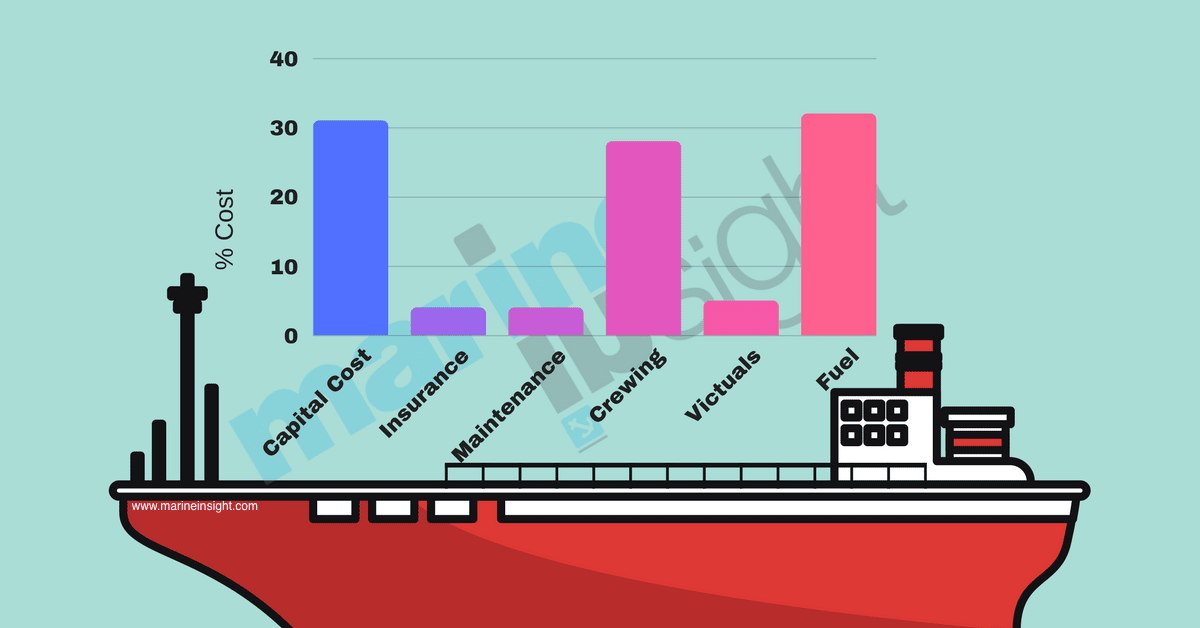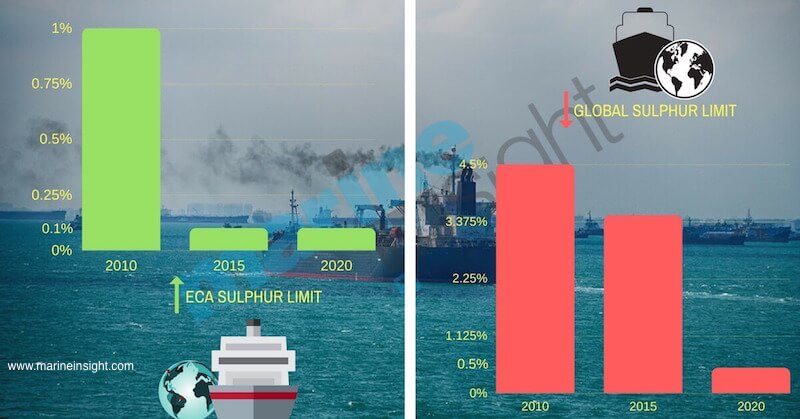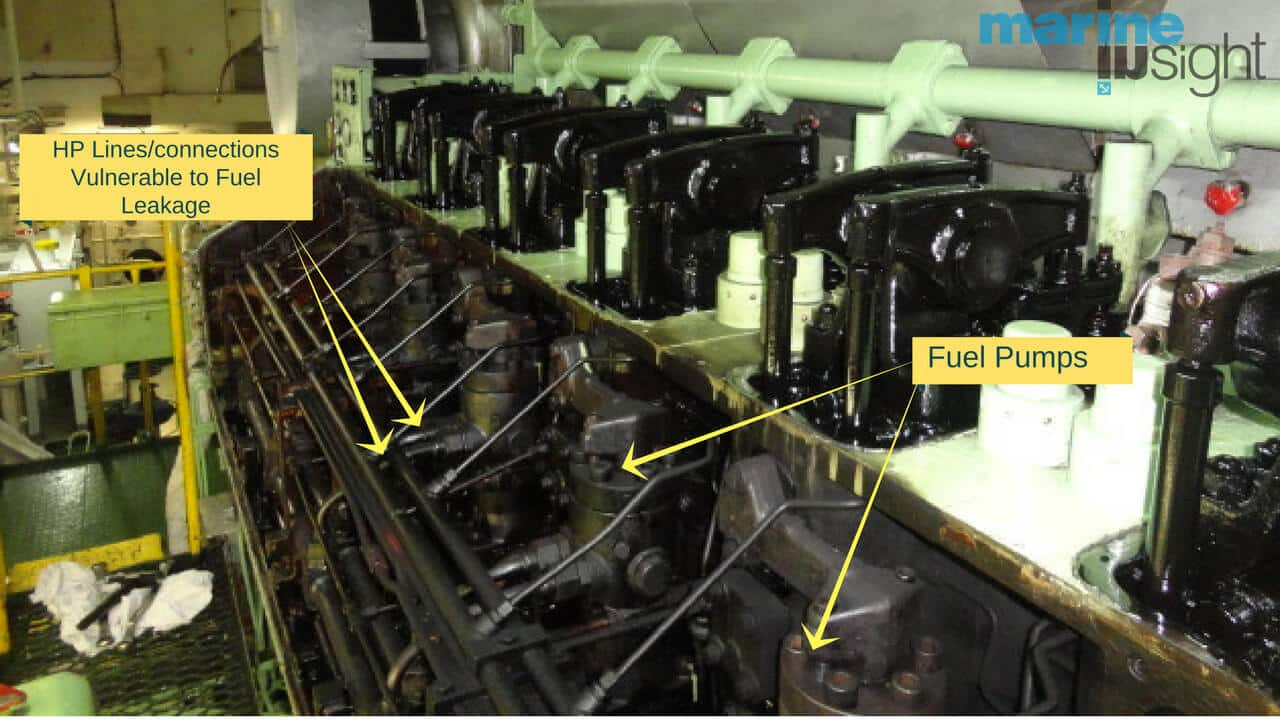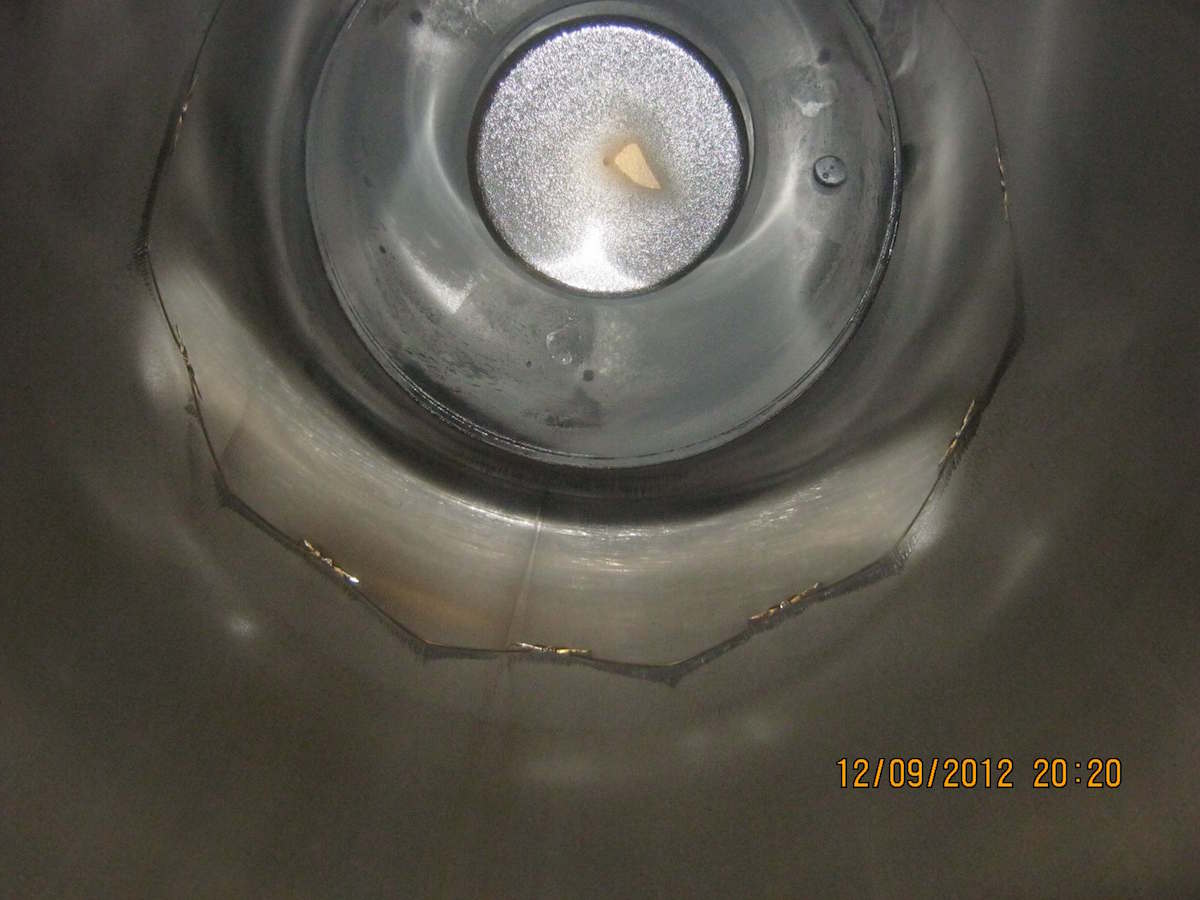

The mega marine engines of ships burn tonnes of fuel every day in order to propel massively loaded ships. These engines are known to use low-grade fuel oil to lower ship operating costs as cost of fuel represents as much as 30-50% of total operating costs of a ship.
Unfortunately (or fortunately), it’s not always possible to use low-grade fuels such as heavy fuel oil or HFO in regulated areas known as ECAs or Emission Control Areas. Marine Gas Oil Fuel or MGO is one of the most prominently used clean fuel in such cases.
Related Read: Download FREE eBook – A Guide to ECA Compliance For Ships + 4 Bonuses
The shipping industry is amongst the “early-adapters” in the transportation sector to develop and follow stringent environmental laws in order to move cargo worldwide. Fighting air pollution from ships has been the top agenda for the Marine Environmental Protection Committee, and hence several regulations have been enforced to curtail the harmful emissions from ships such as Sox and NOx.
Related Read: Marine Pollution by Ships -Tips for Reducing & Recycling Waste at Sea
With the ever-changing technology on ships, the fuel that is used to run marine engines is also changing rapidly. Recently, LNG is being seen as the “future fuel” for the shipping industry, however, the industry as a whole is yet to adapt to this change, and thus Marine Gas Oil is still one of the most preferred clean fuel used on ships.


Marine Gas Oil used on ships is a blend component of the light cycle (gas) oil (LCGO) that contains about 60% aromatics. Due to the high aromatic nature, the density of a marine gas oil blended with LCGO will be higher than the gas oil from an atmospheric distillation refinery. The density of MGO will usually be closet to 860 kg/m3 (at 15°C).
The marine gas oil is also considered as low sulfur fuel oil or LSFO because it has sulphur content between approx. 0.10 and 1.50 m/m %.
Related Read: FAQs: Sulphur Limits In Emission Control Areas
Types of clean fuel oil for the maritime industry available in the market:
The RM and DM are types of marine oils, which can be further divided into groups, depending upon the sulphur content in the marine fuel oil.
– LSFO: Products that are above 0.10% but meeting a 0.50% sulphur limit
– ULSFO: Product with maximum of 0.10% sulphur content
Nowadays, the new age ULSFOs in the market typically have only 10 to 15 parts per million (ppm) sulphur or 0.001% to 0.0015%.
Cetane index is one of the essential marine fuel oil properties only applicable to marine gas oil and distillate fuels. It defines the ignition quality during the combustion process in a diesel engine. The cetane index is calculated from the Cetane number of the fuel which is provided in the “property of marine fuel details” in bunker delivery note.
Related Read: Ways to Achieve Efficient Combustion in Marine Engines
In general, the higher rpm engine requires high cetane index fuel. A low cloud point gas oil may only be stored onboard in drums because of its low flashpoint.


Microbial contamination, caused by bacteria and fungi, occurs in a fuel having water quantity. Due to bacterial presence, the fuel systems will generate problems such as chocked fuel filters and erratic engine operation. Possible microbiological contamination indicators are:
– Hazy appearance on the oil surface
– Suspended impurities in the oil
– Presence of the emulsion or a slimy interface layer between water and gas oil
– Foul smell from the tank drain with slight sludge discharge during draining operation
Fuel pumps of marine engines are designed for a minimum viscosity. The viscosity of Marine Gas Oil is very low as compared to the pump design factor which leads to inadequate hydrodynamic lubrication, causing wear and scuffing.
Related Read: Viscosity Meter and Viscosity Controller Used on Ships
A decrease in fuel viscosity may cause an increase in fuel leakage between the pump plunger and barrel.
The leakage can lead to a hot start, and low fuel setting starts difficulties, especially in worn fuel pumps.
Due to the low viscosity of the marine gas oil, the external and attached fuel pumps may not deliver the fuel at the required pressure, which will eventually hamper the designed power output of the engine.


The diesel generator installed on ships these days operate on both residual and distillate fuel. The valve seat deposits (on the inlet valve) is significantly less when using distillate fuel as compared to using residual fuel oil. This is because the distillate fuels such as Marine Gas Oil produces fewer combustion deposits.
The 4 stroke marine engine efficiency on the ship is measured on the basis of residual oil, and the design of the engine is done focusing on the use of residual fuel. Most of the 4 stroke engines are installed with water-cooled injection nozzles to reduce the injector tip temperature (for avoiding coking of the fuel which would cause deposits known as trumpets on the nozzle tip).
When using distillate fuel, the nozzle cooling arrangement will further reduce the temperature of the distillate fuel, already having very low viscosity. The additional cooling with water may also cause overcooling of nozzle, leading to falling of temperature below the dew point of the sulphuric acid in the combustion gas and cause corrosion of the nozzle. To tackle this, the engineer must ensure to turn off nozzle cooling during distillate marine fuel oil operation.
Related Read: Important Generator Design and Operational Features Ship Engineers Must Know
Another problem associated with the usage of marine gas oil is leakage. As the viscosity of the fuel is much lower than the regular fuel of the engine, it accelerates the fuel leakage from pumps and also contaminates the lubrication.
To tackle this problem, most of the 4 stroke engines comes with lubricating sealing oil at the fuel pump. This oil seals the passage of distillate fuel to minimise the leakage.
Related Read: Situations When Ship’s Generator Must be Stopped Immediately
Most of the residual fuels are not compatible with sealing lubricating oil, hence the engineer must ensure to switch off the sealing oil to avoid compatibility issues, else it will lead to problems like fuel pump sticking etc.
During the burning of low sulphur fuel oil or LSFO, lacquering in liner may also be observed. Marine gas oil produces deposits which stick on the liner surface and disturbs the oil film lubrication in the liner. The engine design and use of aromatic fuels as the primary burning fuel are important factors that can contribute to increasing the lacquer formation.
The BN of the lube oil used in 4 stroke engines that operate majorly on distillate marine fuel oil is in the range of 10 to 16 mg KOH/g. When the engine is operated with residual fuels, the BN of the lubricating oil is kept between 30-55 mgKOH/g.
When using distillate fuel for a more extended run (more than 1000 hours), it is always advisable to switch the lube oil with lower Total Base Number (TBN) with value as stated above. For shorter operation, it is not critical for the engine to keep using lubricating oil with BN of 30-55 mg KOH/g.
Related Read: Fuel Oil Change Over Procedure for Ship’s Main and Auxiliary Engines
Related Read: Why 2-stroke Engines are Used More commonly than 4-stroke on Ships?


Related Read: Understanding Hot And Cold Corrosion In Marine Engines
For new marine engines running on heavy fuel oil, the engineer officers have to evaluate the cylinder conditions and report to the engine maker after changing the fuel to LSFO to check the deposits and scuffing on combustion chamber parts such as piston, crown, liner, and ring.
Related Read: 13 Malpractices In Bunkering Operations Seafarers Should Be Aware Of
The contamination of fuel can happen at any part of the supply chain, i.e. at Fuel-producing companies, when the fuel is with dealers, or at the end-users. It’s a collective responsibility of all to avoid contamination.


Hence the sample must be sent to shore laboratory as soon as the bunker is received on the ship
Related Read: Important Points To Consider While Cleaning Tanks On Ships
The engineer must ensure correct fuel oil viscosity, and fuel pump pressure is maintained when the engine is running on marine gas oil.
Most of the diesel fuel does not require pre-heating (Distillate Marine fuel). Maintain the correct temperature if Residual Marine fuel is used.
For the marine engine efficiency, it is essential to maintain the fuel viscosity when running on marine gas oil. Marine gas oil or MGO Cooler/ chiller can be installed in the FO feed pipeline to control the viscosity.
Related Read: Ways to Monitor and Measure Marine Engine Performance
Even with the advantage of low emission from ship’s engine, LSFO or ULSFO has few disadvantages i.e. not compatible with the current engines the ships are using.
The problems arising due to marine gas oil may lead to severe catastrophes such as engine failure (due to fuel pump problem or seizure of combustion chamber parts), resulting in vessel collision, grounding and marine pollution. It is therefore important for the ship’s crew to know the pros and cons of these fuels and follow the correct procedure when handling such fuels onboard ships.
Disclaimer: The views mentioned above are of the author only. Data and charts, if used, in the article have been sourced from available information and have not been authenticated by any statutory authority. The author and The Marine Learners do not claim it to be accurate nor accept any responsibility for the same. The views constitute only the opinions and do not constitute any guidelines or recommendation on any course of action to be followed by the reader.
The article or images cannot be reproduced, copied, shared or used in any form without the permission of the author and The Marine Learners.










We believe that knowledge is power, and we’re committed to empowering our readers with the information and resources they need to succeed in the merchant navy industry.
Whether you’re looking for advice on career planning, news and analysis, or just want to connect with other aspiring merchant navy applicants, The Marine Learners is the place to be.